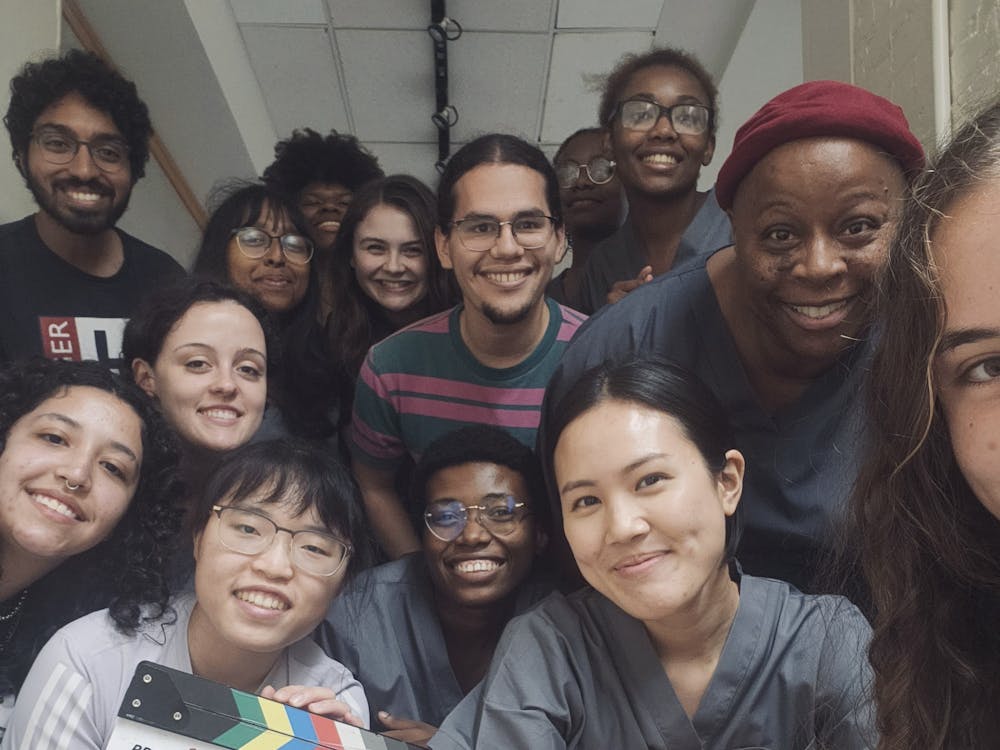The Shape of Water is the most original movie I have seen this year, possibly ever.
The film is a mélange of romance, drama, comedy and horror, perfectly blending all its elements into something truly mystical.
The film’s main character, Elisa, played by Sally Hawkins, is isolated in her own world, unable to talk because of a wound on her neck from her childhood. She works as a cleaner with her friend Zelda (Octavia Spencer), who does all the talking for her.
Sally Hawkins manages to turn Eliza — a character with no lines — into a relatable, kind and selfless woman who falls in love with the wrong... thing.
Director Guillermo del Toro was heavily inspired by Creature from the Black Lagoon, a classic horror movie from 1954. However, the Amphibian Man (played by Doug Jones) in The Shape of Water is infinitely different.
He is frightening at first, angry and irritated after being moved from South America to a lab in Baltimore in the 1960s, where the film takes place. However, by the end of the film, the Amphibian Man is loving and brave and utterly human.
Del Toro has managed to humanize this creature, so much so that you nearly forget he’s a monster at all. The graphics are astoundingly realistic; you can see the blink of the Amphibian Man’s eyes and the wiggle of his toes at every point in the film. The great attention put into creating this scaly monster certainly pays off.
There is a certain magic hanging in the air throughout the film, most noticeable in the scenes with Eliza and the Amphibian Man. The scenes are lit perfectly, a green undertone always there to signify the presence of water in every corner.
Music is a steady presence throughout the film. Eliza taps along with Shirley Temple while watching television with her neighbor, Giles (Richard Jenkins). She also dances around the lab while the Amphibian Man eats the hard-boiled eggs that she brought him, his favorite snack and Eliza’s first attempt at reaching out to him.
The romance is so enthralling that you even buy the whimsical tribute to black and white TV dance specials. When Eliza and the Amphibian Man waltz around together in Eliza’s fairytale vision, the whimsy and pure joy of it all makes you fall into step with them.
A love story between a woman and an amphibian monster should be creepy and unnatural, yet somehow, you buy it — you even root for them against all odds. You do it because you’re hoping, just like Eliza, that there is good in the world and that all people have the chance to be happy.
This is clearly not the thinking of Richard Strickland (Michael Shannon), an evil FBI agent and the foil to Eliza who brought “the Asset” to this lab in Baltimore in the first place.
Shannon is utterly convincing as Strickland: arrogant, career-oriented and completely self-serving — a classic villain. Most scenes featuring Richard are violent and graphically so.
When Richard’s fingers are ripped off by the Amphibian Man in the first part of the film, Eliza puts them in her sandwich bag to save them. We then get the pleasure of watching Richard’s body reject the fingers.
Del Toro did not set this film in Baltimore in the 1960s for no reason. Baltimore serves as the perfect backdrop to the struggle of love between two people who aren’t socially accepted. This cannot be a coincidence.
Racial issues are a strong theme in the film, with Zelda seeing discrimination and unfair cruelty both in her workplace and her own home. She is not the only person of color to be discriminated against.
There is also a vein of gay discrimination in a heartbreaking subplot in which Giles (Jenkins) falls for a guy who works at the pie place down the street. When Giles reveals his interest, the waiter tells him immediately to leave and never come back.
Yet another reason to praise The Shape of Water is this attention to discrimination and uncomfortable topics. Baltimore in the 1960s experienced these issues; Baltimore in the 2010s still experiences these issues. The representation of injustice on screen is important and meaningful, especially when touchy topics are often shied away from in big budget films such as this one.
The Shape of Water has been nominated for 13 Oscars, including the coveted Best Picture. I hope it wins, but not because of the beautiful love story, the impeccable cinematography or the riveting original score.
I hope it wins because it is different and sincere and imaginative, a whirlwind story of heartache and friendship and kindness. Despite all the whimsy, it is real.























Please note All comments are eligible for publication in The News-Letter.